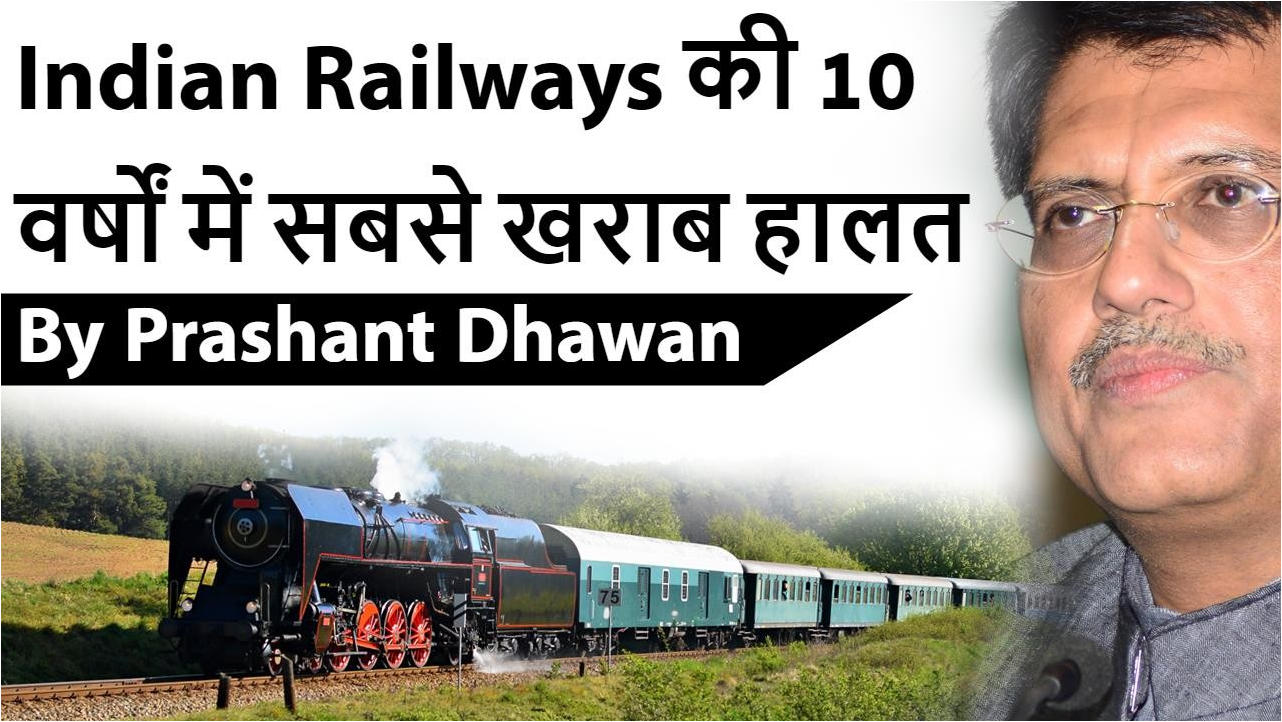Table of Contents


OPERATING RATIO IN INDIAN RAILWAYS
- The financial health of the railways is determined by its Operating Ratio (OR). Operating Ratio indicates how much railway spends to earn a rupee.
- An Operating Ratio of 90% means that Railway is spending 90 paisa to earn 100 paisa (i.e. one rupee).
- Less operating ratio = healthy railway finances
THE PAST
- Historically, an Operating Ratio of Indian railway was not a problem in 1960s and 1970s.
- The best ever OR of Indian Railways was 7% in 1963-64.
- However, for the last few decades, this ratio is lingering between 92 to 98.5%.
THE NUMBERS
- The national auditor in its report on the railways’ finances, said that the railways would have ended up with a negative balance of Rs 5,676.29 crore instead of a surplus of Rs 1,665.61 crore but for the advance received from NTPC and IRCON.

UNDERSTANDING THE FIGURES
- Exclusion of the advance by other PSUs would otherwise have increased the operating ratio to 66 per cent
- The national auditor in its report on the railways’ finances, said that the railways would have ended up with a negative balance of Rs 5,676.29 crore instead of a surplus of Rs 1,665.61 crore but for the advance received from NTPC and IRCON.
GOVERNMENT’S DEFENCE
- Goyal said that Railway being a public service utility, invests a lot of money in the north-eastern, defence, and backward regions, which may not always be financially viable but need to be taken up nevertheless.
- The 7th pay commission itself has had an impact of over Rs 22,000 crore on the expenditure of the Railways which is more than 10% of the total revenue that is collected in the Railways, Goyal said.

ANOTHER CAUSE
- In the second quarter of the current fiscal, the national transporter saw a dip of Rs 155 crore and Rs 3,901 crore in passenger and freight fare earnings respectively compared to the previous one.
- According to a reply to an RTI query filed
COUNTERING SLOWDOWN
- In a bid to counter the slowdown, Indian Railways has initiated a slew of measures. Recently, the national transporter waived its “busy season” surcharge on freight traffic, implemented a scheme offering a concession to passengers of up to 25 per cent on trains with AC chair car and executive class sitting. Also, it launched initiatives to phase out 30-year-old diesel engines, generate non-fare revenue, cut down on fuel bills, as well as monetise its land holdings.
BAD TIMES AHEAD
- Once more PSUs get disinvested what will we do?
- How will railways be bailed out then?























 WhatsApp
WhatsApp